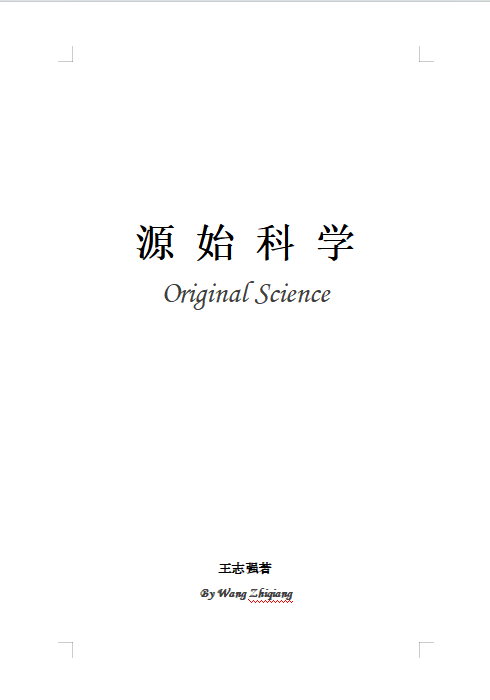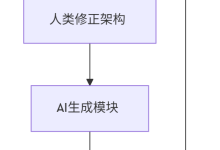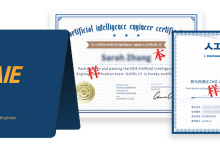
目 录
Table of Contents
Volume I: Original Philosophy
Chapter 1: The Source Text of Original Scripture Chapter 2: Annotated Commentary on Original Scripture Chapter 3: Methodological Study of Original Scripture Chapter 4: Value Assessment of Original Scripture
Volume II: Original Mathematics
Chapter 1: The Source Text of Essentials of Calculation Chapter 2: Mathematical Derivation of Essentials of Calculation from Original Philosophy Chapter 3: The First Weighted Formula of Original Philosophy: Essentials of Calculation and Its Sociological Applications Chapter 4: Physically-Based Derivation and Analysis of the Weighted Formula in Original Philosophy: Essentials of Calculation Chapter 5: Value Assessment of Essentials of Calculation in Original Mathematics Postscript
Volume III: Original Science
Chapter 1: The Framework of Original Science Chapter 2: Analytical Derivation of the Three Weighted Laws\’ Formulas in Original Science Chapter 3: Scientific Hypotheses in Original ScienceChapter 4:Applications of Original Science Chapter 5: Value Assessment of Original Science Epilogue Special Acknowledgments
Volume I: Original Philosophy
Shangjing · Yuanshi: Taishang, Yuanshi, and Lingbao
Zhongjing · Huaxing: vacuum, imaging, and transformation
Zhongjing · Huaxing: vacuum, imaging, and transformation
Chapter II《源始经》Textbook notes
Section 1: The Upper Canon: Original (Text Notes)
I.Textual Commentary on The Supreme Chapter
1. Line-by-Line Commentary on the Original Text
Original Text:
The Supreme (太上) is that which reaches ultimate magnitude (至大) and transcends all hierarchy (无上).
Annotation:
The term \”Supreme\” (太上) denotes the cosmic noumenon that simultaneously embodies two essential attributes:
Ultimate Magnitude (至大) – Absoluteness in scale/perfection
Transcendence of Hierarchy (无上) – Beyond all comparative levels
Original Text: \”The Supreme declares: \’Greatness\’ — boundless and infinite.\”
Annotation:
The primary attribute of the Supreme (太上) is Greatness — an immeasurable vastness without limits.
Original Text:
\”Ultimate Greatness transcends \’greatness\’ itself — it embraces all existence without exception.\”
Annotation:
This supreme greatness (至大) has reached such absolute perfection that:
No Greater State Exists: The concept of \”greatness\” becomes self-transcending
Cosmic Inclusivity: It contains all manifestations of the universe (无所不容)
Original Text:
\”Next comes the cosmos (宇宙),
then all phenomena (万物),
then heaven-earth (天地),
then sentient ecosystems (含生).\”
Annotation:
If we refer to all life-bearing ecosystems in the world, including humanity, collectively as \”hansheng\” (含生),
then that which is greater than \”hansheng\” and can encompass \”hansheng\” is the noumenon called \”tiandi\” (天地). What is \”tiandi\”? \”Tiandi\” is the general term for all environments in ancient people\’s cognition, comprising two environmental systems: the \”di\” (地) formed by all tangible substances beneath our feet and the \”tian\” (天) that exists like a curtain in the sky. Of course, this definition is an abstract generalization of the world entities in ancient cognition, as they themselves had various systematic models of tiandi, such as: the Huntian theory, Gaitian theory, Xuanye theory and other world models. But overall, using \”the general term for all environments in ancient cognition\” or \”the sum of environments within human visual limits\” to define the concept of \”tiandi\” in traditional culture is relatively precise.
Then, what is greater than \”tiandi\”? It is \”wanwu\” (万物). What does \”wanwu\” mean? \”Wanwu\” refers to a Daoist philosophical concept meaning \”the sum of all tangible and intangible existences in the world,\” therefore the greatness of \”wanwu\” can encompass \”tiandi.\” (Of course, if we adopt other Chinese texts\’ interpretation, there\’s also the saying \”first there was tiandi, then wanwu was born,\” in which case within this concept of \”wanwu,\” \”tiandi\” would be greater than or equal to \”wanwu.\” But based on the essential definitions of tiandi and wanwu, wanwu far exceeds the scope of \”tiandi\” in ancient cognition, therefore here \”wanwu\” is \”greater.\”)
Next, what is greater than \”wanwu\”? What can encompass \”wanwu\”? It is \”yuzhou\” (宇宙), a philosophical concept that originated from the Eclectic and Mohist schools and flourished in Han Dynasty Daoism (Theory of Creation) and Wei-Jin metaphysics (Ontology). It was proposed by the Warring States period thinker Shi Jiao (approx. 390-330 BCE), a representative figure of the Eclectic school, who clearly defined \”all spatial dimensions as yu, all temporal dimensions as zhou,\” thus creating the term \”yuzhou.\” That is to say, \”yuzhou\” is \”the general term for time and space\” (some say \”the sum\”). Therefore, \”yuzhou\” (the general term for time and space) is greater than \”wanwu\” (the sum of all tangible and intangible existences in the world), meaning \”yuzhou\” encompasses \”wanwu.\”
The term \”taishang\” (太上) is how I define the fundamental designation of the cosmic noumenon through pure Chinese etymology, possessing two attributes: \”ultimate greatness\” (至大) and \”transcending hierarchy\” (无上). It is an expression of the cosmic noumenon that is more ultimate than yuzhou itself. Therefore, \”taishang\” is greater than or equal to \”yuzhou.\”
Thus: hansheng is great, tiandi is great, wanwu is great, yuzhou is great, but taishang is ultimately great.
Therefore, with taishang as the ultimately great noumenon, that which is one level below it in greatness is called yuzhou; one level below yuzhou is wanwu; one level below wanwu is tiandi; and one level below tiandi is hansheng.
Original Text:
\”Taishang declares \’source\’; the cosmos originates from it.\”
Annotation:
The second attribute of \”Taishang\” is called \”source\” (源), meaning the generative root from which all things in the cosmos arise.
Original Text:
\”The Supreme is beyond supremacy—the root of all things.\”
Annotation:
It is the primordial source of all existence (encompassing both \”source-as-origin\” [源头]—emphasizing its attribute as the logical starting point of generation, and \”primordial-as-arche\” [原初]—emphasizing its attribute as the ultimate reality transcending time and space). Thus, it is \”supreme.\” Nothing can precede it as a source, hence it is \”beyond supremacy.\” It is where all things take root.
Here, we must explain why both \”source-as-origin\” and \”primordial-as-arche\” are emphasized:
\”Source-as-origin\” (源头) must be articulated because it reflects humanity\’s inevitable tracing back of the ultimate philosophical question—\”Where do I come from?\” This追溯 (retracing) from the end of generation to its head necessitates the concept of a \”source.\”
\”Primordial-as-arche\” (原初) must also be articulated, referring to the traced-back beginning of all generation—the fundamental origin of all things. It must possess the attribute of an ultimate reality超越 (transcending) time and space.
Both must be emphasized simultaneously to prevent partial understanding from leading to erroneous reductionism.
Original Text:
\”Below it is the cosmos (宇宙),
below that, all phenomena (万物),
below that, heaven-earth (天地),
below that, sentient ecosystems (含生).\”
Annotation:
Every person is born facing a fundamental question: Where do I come from?
My parents gave birth to me,
The mountain village nurtured my parents,
Nature sustains society,
Heaven-earth (天地) gives rise to nature (the biosphere),
The cosmos (宇宙) generates heaven-earth.
The common thread is generation (生), and the essence of this inquiry is to trace the source of all generation.
Through this tracing, we discover:
The Supreme (太上) is the primordial origin of all things in the cosmos.
The cosmos generates and nurtures all phenomena (万物).
All phenomena generate and nurture heaven-earth and sentient life (含生).
Original Text:
\”The Supreme has no gate—
fortune and misfortune exist inherently.\”
Annotation:
When writing this line, I recalled the phrase \”Fortune and misfortune have no gate; they are summoned by one\’s own actions\” (from the Taishang Ganying Pian). Here, I aim to express the concept of inherent existence of fortune and misfortune.
The term \”gate\” (门) is used for lack of a better word. In the linguistic logic of Original Philosophy texts, this is the least literal usage of a Chinese character—here, \”gate\” borrows its derivative meaning as an \”operational interface\” (like a control panel).
We have already demonstrated the existence and attributes of the cosmic noumenon, The Supreme (太上), which human knowledge must inevitably confront or invoke:
To trace \”Where do I come from?\”, one must pursue the cosmic origin.
To study or transform nature, one must engage with the concept of noumenon—all research requires dissecting and experimenting with a thing\’s fundamental reality.
Thus, in all human knowledge, The Supreme holds primacy:
Without the concept of cosmic noumenon, no object of study exists.
Without objects, no methods of study exist.
Without research, no attributes of things can be discerned.
Conclusion: Without noumenon, human knowledge and science/technology cannot emerge, as they depend on classifying noumena and studying attributes.
Using monosyllabic Chinese characters, we have rigorously defined and proven the inevitability of the cosmic noumenon in human civilization. Given human nature, dependence and worship of this most powerful cosmic entity arise—leading to superstition, greed, and pursuit of prosperity.
Hence, \”The Supreme has no gate—fortune and misfortune exist inherently\” conveys:
The Supreme is a cosmic noumenon, not a deity.
As noumenon, it lacks a divine control panel to fulfill human desires (e.g., wealth).
No sorcery can manipulate fortune/misfortune.
On \”Inherent Existence\” (福祸自存):
\”Greed\” (贪): In Buddhism, this is \”attachment to favorable conditions\”—humans seek fortune (一切顺遂), meaning \”all things conforming to my will.\”
\”Inherent\” (存):
Not \”summoned\” (召), because from an ontological perspective:
Your noumenal structure determines your attributes.
Attributes determine your future information content/structure.
Thus, your future is already stored in The Supreme as information, awaiting actualization.
Every action writes information into the noumenon—your sought fortune/misfortune is pre-stored in future timelines.
Rejecting AI Suggestions:
\”No Response\” (无应):
Contradicts the next chapter\’s \”resonance without response\” (有感无应).
The Supreme does respond, but not audibly or as wished (per Six Secret Teachings: \”Do not promise rashly; do not refuse obstinately\”).
Like a clay idol, it neither grants nor denies—uncertainty is why it feels authoritative.
\”Pre-stored\” (预存):
Incorrect: \”Inherent\” (自存) emphasizes agency (信息写入). \”Pre-stored\” implies determinism, violating truth.
Original Text:
\”Neither being nor non-being, some call it divine.\”
Annotation:
\’Non-non-being\’ means the cosmic noumenon Taishang objectively exists—you cannot claim Taishang does not exist.\”
\”\’Non-being\’ means the Taishang noumenon exists, but \’divine Taishang\’ does not necessarily exist.\”
\”\’Some call it divine\’ means some regard or name Taishang as a divinity.\”
\”\’Neither being nor non-being\’ asserts Taishang exists, but not in the form you imagine.\” \”On whether divine Taishang exists, take the human body as an example…\”
\”First, human cells cannot communicate with us.\” \”Then, from a cell’s perspective…\”
\”…as cells are material entities, they can infer the body’s (noumenon Taishang) definite existence.\”
\”But since cells cannot communicate with the body’s consciousness, they cannot know if it exists.\”
\”Yet from our own view, human consciousness truly and objectively exists.\” \”Thus, in this body-cosmos system, both noumenon Taishang and divine Taishang coexist.\” \”But comparing infant and adult consciousness…\”
\”First, an adult’s consciousness objectively exists; second, an infant, having no experiences, logically cannot possess consciousness—thus infants have none.\”
\”Therefore, from the noumenon Taishang’s perspective, \’divine Taishang\’ neither necessarily exists nor doesn’t.\”
\”Returning to the cell-body analogy, paralleling humanity’s view of cosmic noumenon Taishang…\”
\”It belongs to: Taishang noumenon necessarily exists, while \’divine Taishang’s\’ existence is a state of neither being nor non-being.\”
\”Thus, \’Taishang noumenon necessarily exists, while divine Taishang neither necessarily exists nor doesn’t, and doesn’t exist in the form humans imagine as divine,\’ is the most precise, objective, and truthful account of the cosmic Taishang noumenon.\”
2、Philosophical-Scientific Parallel Interpretation of The Supreme Chapter
Core Proposition: The Chaotic Noumenon Theory of the Supreme Cosmos
Corresponding Concepts:
Philosophical: The Supreme Cosmic Noumenon Theory
Scientific: Chaotic Cosmic Noumenon Theory
Having previously established the definition of the Supreme through philosophical texts and elucidated its descriptions in vernacular language, we now examine the concept of \”the Chaotic Noumenon Theory of the Supreme Cosmos\” in the Original Philosophy system. This theory posits: \”The current noumenon of the cosmos (the Supreme) is chaos.\”
First, let us insert a relevant passage from another section of the Original Philosophy series, presented here in the classic \”text + annotation\” format.
Text Position: Original Department – Preface Laws Volume – Preface Laws Chapter – Preface Section
Text: \”Preface\” means the arrangement of sequence.
Annotation: The essence of order lies in the arrangement of sequence.
Original Text:
\”Order arises from the arrangement of fundamental particles. There are two basic orders: clustering in spatial dimensions (originally termed \’piling\’), and sequencing through time. These constitute the origin of all orders, beyond which none exists.\”
Annotation:
\”The arrangement of \’fundamental particles\’ generates \’order.\’ There exist two primordial orders in the world:
The first fundamental order is called \’cluster\’ – it refers to the uncorrelated distribution of fundamental particles in all spatial dimensions (up-down, left-right, front-back). Originally written as \’piling in all spatial dimensions,\’ but since \’piling\’ specifically describes the shape of sand under Earth\’s gravity (which represents the \’cluster\’ order under gravitational constraints), this didn\’t fully capture the concept of \’uncorrelated distribution.\’ Therefore it was revised to \’clustering in all spatial dimensions,\’ signifying chaotic order.
The second fundamental order is called \’sequence.\’ What is its essential nature? It means two fundamental particles arranged linearly in temporal order (before-after) along a single dimension – this is linear order.
Chaotic order (spatial clustering) and linear order (temporal sequencing) constitute the fundamental or root orders of all order in existence. All other orders are composites of these two, with no independent order existing beyond them.\”
Original Text:
The Dao is the track.
Annotation:
The Dao is the trajectory of all things\’ movement – that is to say, the law.
Original Text:
\”The noumenon of the Supreme is called Greatness. The Great Dao is the Dao of the Supreme.\”
Annotation:
\”The noumenon of the Supreme is named \’Greatness\’.\”\”Therefore, the meaning of \’Great Dao\’ is the fundamental order or law of the cosmic noumenon, the Supreme.\”
\”Here, we must first cite passages from the Dao De Jing to clarify the foundational concept of \’Dao\’ in that text, explaining the logical basis for using \’Dao\’ in this context.\”
\”\’The Dao is empty, yet using it cannot fill it.\’ In the earlier silk manuscript version of the Dao De Jing, it reads: \’The Dao is a vessel, yet using it never fills it.\’ \’Vessel\’ refers to a hollow container capable of holding things.\”
\”Thus, this line reveals that the Dao De Jing\’s \’Dao\’ expresses its spatial attribute—like the hollow space of a cup, its property of \’not being full\’ is what is used.\”
\”\’I do not know its name, so I style it \”Dao\” and reluctantly name it \”Greatness.\”\’ In ancient naming practices, the \’style\’ (字) often explained the \’name\’ (名). Thus, this means: I do not know its true name, so I use \’Greatness\’ as its name and assign it the style \’Dao.\’\”
\”That is, \’Greatness\’ is the cosmic noumenon, while \’Dao\’ is the distilled essence (i.e., the law) of that noumenon. Because the Dao (Greatness) is the cosmic noumenon—the ultimate composite of all things—it is omnipresent.\”
\”Thus, in traditional culture, \’Dao\’ possesses both noumenal attributes and the meaning of worldly principles or laws.\”
\”The Original Department: Preface Laws Volume—Preface Laws Chapter—Preface is a text about order. Here, it emphasizes the extended meaning of \’Dao\’ as \’path\’—i.e., laws and principles—rather than its cosmic noumenal sense.\”
\”Here, we can also see that the Dao De Jing\’s naming of \’Dao\’ as \’Greatness\’ and the \’Supreme\’s\’ \’Tai\’ (interchangeable with \’Greatness\’) are consistent. This reflects both Original Philosophy\’s scholarly inheritance of traditional thought and its systematic integration of Eastern philosophical culture.\”
Original Text:
\”The unity of the Three Realms—Heaven, Earth, and Humanity—is called \’Heaven.\’ The Heavenly Dao is the Dao of Heaven.\”
Annotation:
\”If we collectively refer to the \’Heaven and Earth\’ we inhabit as \’Heaven,\’ then the order and laws governing this Heaven and Earth constitute the \’Heavenly Dao.\’\”
\”The \’Heavenly Dao\’ represents the systemic laws within a localized system.\”
\”The following passage from Original Philosophy—Original Department: Preface Laws Section—Preface Laws Chapter: Yang Generation explains the Three Realms:\”
\”Quotation: \’The unified Three Realms are called Heaven. Heaven comprises Three Realms, with the Human Realm as supreme. Above lies the Heavenly Plate, where stars are arrayed like Go pieces. Below lies the Earthly Plate, where mountains and rivers are arranged. Between them lies the Human Realm, containing all living things. The Three Realms combined are sealed as Heaven.\’\”
\”Annotation: The unified whole of the \’Three Realms\’ is termed \’Heaven.\’\”
\”\’Heaven\’ consists of three enclosed environmental systems. The \’Human Realm,\’ situated between \’Heaven\’ and \’Earth,\’ should prioritize \’human-centric\’ values from a human perspective.\”
\”The \’Heaven\’ system resembles a curtain, filled with stars arranged like Go pieces on its surface, exhibiting cyclical motion patterns.\” \”The \’Earth\’ system resembles a large plate, filled with mountains and rivers arranged in specific patterns.\”
\”The \’Human\’ system, spatially located between \’Heaven\’ and \’Earth,\’ contains all lifeforms between them, with flora and fauna operating according to set laws.\”
\”The three interconnected, self-operating systems of \’Heaven,\’ \’Earth,\’ and \’Humanity\’ form the ancient Eastern concept of \’Heaven-and-Earth,\’ representing the cosmic totality, with its supreme principles abstracted as the deity \’Heaven.\’\”
\”We encapsulate the ancient human-perceived environmental system as \’Heaven-and-Earth,\’ using \’Heaven\’ to denote this system and \’Heavenly Dao\’ for its operational laws.\”
\”The essence of \’Heaven-and-Earth\’ is the collection of all observable environments \’near us\’ or \’around humanity,\’ while the \’Heavenly Dao\’ constitutes the \’laws governing our local cosmos.\’ Whether physics exists depends on whether these local cosmic laws hold universality within the greater \’Supreme\’ environment.\”
Original Text:
\”The Heavenly Dao is ordered; the Great Dao is disordered. The Great Dao is chaotic; the Heavenly Dao is distinct.\”
Annotation:
\”The fundamental order of the cosmic noumenon, the Supreme, is chaotic (Great Dao), or in other words, nonlinear—representing the disordered extreme of order.\”
\”The fundamental order of our Heaven-and-Earth (Heavenly Dao), or linear order, represents the ordered extreme of order.\”
\”The chaos of the Great Dao\’s order manifests as a state of maximal dispersion.\”
\”The order of the Heavenly Dao reaches maximal organization, manifesting as logical coherence and clear appearances.\”
Original Text:
\”The Great Dao encompasses the Heavenly Dao. Thus within the Heavenly Dao: dispersion gives birth to form; form then disperses.\”
Annotation:
\”The noumenon of the Supreme encompasses the noumenon of Heaven-and-Earth. Therefore, the chaotic order of the Great Dao—the universal cosmic law—becomes the fundamental order (or regulated order-background) of our local Heaven-and-Earth.\”
\”Consequently, all phenomena in our Heaven-and-Earth manifest: ordered generation from chaos (\’dispersion gives birth to form\’)—this being the effect of our local Heavenly Dao;\”
\”and increasing disorder within order, ultimately dissolving into chaos (\’form then disperses\’)—this being the dispersive effect of the Great Dao\’s cosmic background order.\”
Now that we understand the basic concept of \”the cosmic chaos ontology\” in the above primordial philosophical system, let us continue to talk about the problem of cosmological modeling in primordial philosophical cosmology and science: \”the present ontology of the universe (the Supreme) is chaos\”.
In primordial philosophy, the present ontology of the universe is chaos, that is, all things in the present existence and state of being of the universe are like a mass of disordered sand, and this mass of sand is constantly in motion of local shape and then scattering and then shape.
In science-cosmology, the answer to this question is the Big Bang theory. Let\’s first understand the Big Bang theory (generated by deepseek):
The Big Bang Theory is the leading scientific framework in modern cosmology explaining the universe\’s origin and early evolution. Rather than describing an explosion occurring in pre-existing space, it outlines how space, time, matter, and energy themselves began expanding and cooling from an initially extremely hot and dense state.
Core concepts:
The Origin: A Singularity? Theories propose that approximately 13.8 billion years ago, the entire observable universe was compressed into a state of infinite volume, density, and temperature. This point is known as the \”initial singularity.\” However, general relativity fails under such extreme conditions, making the \”singularity\” more of a theoretical extrapolation representing the limits of our current physical understanding. The true origin requires quantum gravity theories (such as string theory) to explain.
Expansion-Spatial Stretching: From that initial state, space itself begins to expand at an astonishing rate. Imagine this: it\’s not matter scattering through empty space, but rather the spatial structure itself stretching, causing all matter and energy points within it to move apart. This is akin to inflating a balloon, where points on its surface (representing two-dimensional space) gradually drift away from each other.
Cooling: Phase transitions and particle formation: As space expanded, the temperature of the universe dropped dramatically. The drop in temperature triggered a series of phase transitions and the formation of elementary particles:
Planck period (<10-⁴³ s): The temperature is extremely high (> 10³² K), all known laws of physics fail, and quantum gravity effects dominate.
The Grand Unification Period (~10⁻⁴³ to 10⁻³⁶ seconds): The separation of gravity from other fundamental forces (strong nuclear force, weak electromagnetic force). Inflation: A widely accepted yet still-verificationing hypothesis suggests that space expanded exponentially by at least 10^10 ²⁶ during an extremely brief period (~10⁻³⁶ to 10⁻³² seconds). This phenomenon explains the universe\’s large-scale uniformity, flatness, and the absence of magnetic monopoles predicted by certain theories.
Quark-gluon plasma period (~10^-¹² to 10^-⁶ seconds): The temperature drops to about 10¹⁵ K, and the strong nuclear force separates from other forces. The universe is filled with free quarks, gluons, leptons (electrons, neutrinos, etc.), and photons in a dense \”soup\” state.
The period of the hadron (10^- ⁶ s to 1 s): The temperature continues to drop (10 ¹² K), and quarks and gluons combine to form hadrons such as protons and neutrons.
Leptons period (1 second to 3 minutes): The temperature drops to about 10¹⁰ K. Leptons (mainly electrons, positrons, and neutrinos) dominate. Antimatter annihilates, but matter slightly outweighs antimatter (by about one billionth), resulting in the matter universe we see today.
Big Bang Nucleosynthesis (BBN) (3-20 minutes): When temperatures plummet to approximately 10⁹K (1 billion degrees), protons and neutrons begin fusing to form nuclei of light elements. The primary products are hydrogen (¹H, about 75%), helium-4 (⁴He, around 25%), along with trace amounts of deuterium (²H), helium-3 (³He), and lithium-7 (⁷Li). The predicted abundance of these elements matches astronomical observations with remarkable precision, standing as one of the most compelling pieces of evidence supporting the Big Bang theory.
Photon-Dominated Era & Recombination Period (380,000 years): The universe continued expanding and cooling. When temperatures dropped to approximately 3,000 K (about 380,000 years after the Big Bang), a pivotal event occurred: recombination. Electrons moved slowly enough to be captured by positively charged atomic nuclei—primarily protons and helium nuclei—forming stable neutral atoms (mainly hydrogen and helium). Prior to this, photons were strongly scattered by free electrons, making the universe an \”opaque\” plasma. After atoms formed, photons ceased interacting with neutral matter and could propagate freely through space. These photons constitute the cosmic microwave background radiation (CMB) we observe today.
The \”Dark Ages\” of the Universe and the Formation of First Generation Celestial Bodies (Hundreds of Millions of Years Later): Following the Big Bang, the universe became transparent but predominantly composed of neutral gas (hydrogen and helium), lacking light sources and thus remaining \”dark.\” As density fluctuations (originating from quantum fluctuations during inflation) gradually intensified through gravitational forces, gas clouds began collapsing. Approximately 100 to 400 million years after the Big Bang, this process gave rise to Population III stars and the first galaxies. The ultraviolet radiation from these celestial bodies ultimately caused most neutral hydrogen in the universe to be reionized (during the reionization period, around 400 to 1 billion years after the Big Bang).
The Formation and Evolution of Structures (Continuing to This Day): Under the influence of gravity, matter (including heavy elements synthesized within stars) continuously accumulates, forming larger-scale structures: galaxies, galaxy clusters, superclusters, and vast voids between them. Dark matter – a mysterious substance that emits no light, absorbs no radiation, and interacts solely through gravitational forces – plays a crucial role in this process, providing the essential gravitational \”skeleton\” for these structures. Dark energy, a mysterious form of energy responsible for the universe\’s accelerating expansion, began dominating the cosmic expansion approximately 5 billion years ago.
Key observational evidence (three pillars):
Hubble\’s Expansion (Galactic Redshift): In 1929, Edwin Hubble discovered that light from distant galaxies generally shifts toward the red end of the spectrum (redshift), with the farther a galaxy is from us, the greater the redshift. This phenomenon is interpreted as galaxies moving away from us at a speed proportional to their distance (Hubble\’s Law), serving as direct observational evidence of the expansion of
The Cosmic Microwave Background (CMB) refers to the faint microwave radiation discovered by Arno Penzias and Robert Wilson in 1964, which permeates the entire sky at a temperature of approximately 2.725 K. This cosmic glow is precisely the \”afterglow\” predicted by the Big Bang theory, formed from primordial photons released during the Big Bang\’s primordial era through 13.8 billion years of expansion and cooling. The CMB\’s temperature distribution (anisotropy), as depicted in maps from WMAP and Planck satellites, reveals minute density fluctuations in the early universe—precisely the seeds for all subsequent cosmic structures like galaxies. The CMB\’s precise blackbody spectrum and exceptional isotropy (uniformity) also serve as strong evidence supporting the Big Bang theory.
Light Element Abundance (Primordial Nucleosynthesis): Observations of light elements (helium, deuterium, lithium) in the oldest stars and interstellar medium show striking agreement with calculations based on Big Bang nucleosynthesis theory. This evidence confirms that these elements formed during the universe\’s earliest minutes rather than originating entirely from stellar interiors.
Current understanding and boundaries:
Inflation mechanism: Although inflation theory has successfully explained the flatness, uniformity and other problems, the specific physical mechanism driving inflation (inflation field) is still an active research field.
Dark matter and dark energy: They make up about 95 percent of the total mass and energy of the universe (dark matter about 27 percent, dark energy about 68 percent), but their nature remains one of physics\’ biggest mysteries.
The initial singularity and quantum gravity: A quantum gravity theory that combines general relativity with quantum mechanics to describe the universe\’s initial moments (the Planck period) has not yet been established.
The Cosmic Geometry and Destiny: Observations indicate that the universe is remarkably flat on large scales (in Euclidean geometry) and is expanding at an accelerating rate (driven by dark energy). If the properties of dark energy remain constant, the universe will continue expanding indefinitely, becoming progressively colder and emptier – a process known as the \”Big Freeze\” or \”Hot Death\”.
Summary:
The Big Bang theory, grounded in robust observational evidence (Hubble expansion, cosmic microwave background radiation, light element abundance), describes the universe\’s expansion and cooling from its primordial hot state to its current form. It successfully explains cosmic inflation, the existence of microwave background radiation, the origin of light elements, and the formation basis of large-scale structures. While significant challenges remain in explaining the universe\’s initial moments (requiring quantum gravity) and understanding the nature of its primary components (dark matter and dark energy), this theory remains the cornerstone of modern cosmology, providing the most reliable scientific framework for comprehending the universe\’s origins, evolution, and ultimate fate. The theory paints a dynamic picture of cosmic evolution rather than a static, eternal universe.
Based on the description of the Big Bang theory, we conclude that its theoretical modeling of the universe primarily involves three fundamental models: singularity, the Big Bang theory, and cosmic expansion. Among these, the proposition corresponding to \”the current state of the universe\” should be the \”cosmic expansion\” model.
It can be seen that the cosmic modeling in Original Philosophy – the Chaotic Cosmic Noumenon Theory of the Supreme – represents one of the fundamental differences between Original Philosophy and the modern scientific worldview.
Modern scientific cosmological theory – the Big Bang theory – primarily describes the current state of the cosmic noumenon and its condition as manifesting in post-explansion expansion.
Whereas in Original Philosophy\’s cosmic modeling, the cosmic noumenon, the Supreme, is perpetually filled with the movement of \”form-then-dispersion, dispersion-then-form\” – where ordered regions are progressing toward maximal dispersion, and disordered regions are moving toward order-generation.
Therefore, Original Philosophy posits that we humans inherently occupy the ordered pole or ordered region within the cosmic chaos. Thus, our ordered region is currently undergoing – or destined for – the process of moving from ordered zones in chaos toward maximal dispersion.
Hence, Original Philosophy maintains that the essence of cosmic expansion is a localized movement within chaos, not a Big Bang.
A cosmic singularity may not exist at all, and cosmic expansion might merely be humanity\’s subjective perception from our limited cosmic region, not an objective fact of the cosmic noumenon and its fundamental laws.
II. Annotation of the Text of The Origin Chapter
1. Original sentence annotation
Original Text:
There is something that is born before heaven and earth. It is neither existence nor non-existence, but the supreme being is called name.
Annotation:
The \”Supreme\” is the cosmic entity that is made up of all things in the world.
Here we borrow the saying from Tao Te Ching, \”there is something mixed and formed\”, which is extremely concise, and it is very appropriate to express this idea here, which is called \”the statements of the predecessors are complete\”.
Original Text:
All things are born of all things. They circulate and begin anew, and they are rooted in each other.
Annotation:
The collective and the individual are mutually generated. The collective can be composed of individuals, and the individual can be differentiated from the collective. The movement between the two is endless, and they serve as the source of generation for each other.
Original Text:
All things originate from each other and are born of each other.
Annotation:
The true scripture is encapsulated in a single phrase, while false doctrines are spread through countless volumes. The core of the entire philosophical system lies in \”all things interact and give birth to each other,\” with the term \”Yuan Shi\” (origin) deliberately chosen to conceal this essential truth. Since the true scripture bears the name \”Yuan Shi,\” all other concepts are similarly prefixed with two characters. Otherwise, according to my academic terminology standards, every noun should be singular.
In other words, the whole body of philosophical works are developed and demonstrated by this sentence, which is why the supreme chapter uses a lot of descriptive methods of argumentation rather than the literary q
 网硕互联帮助中心
网硕互联帮助中心





评论前必须登录!
注册